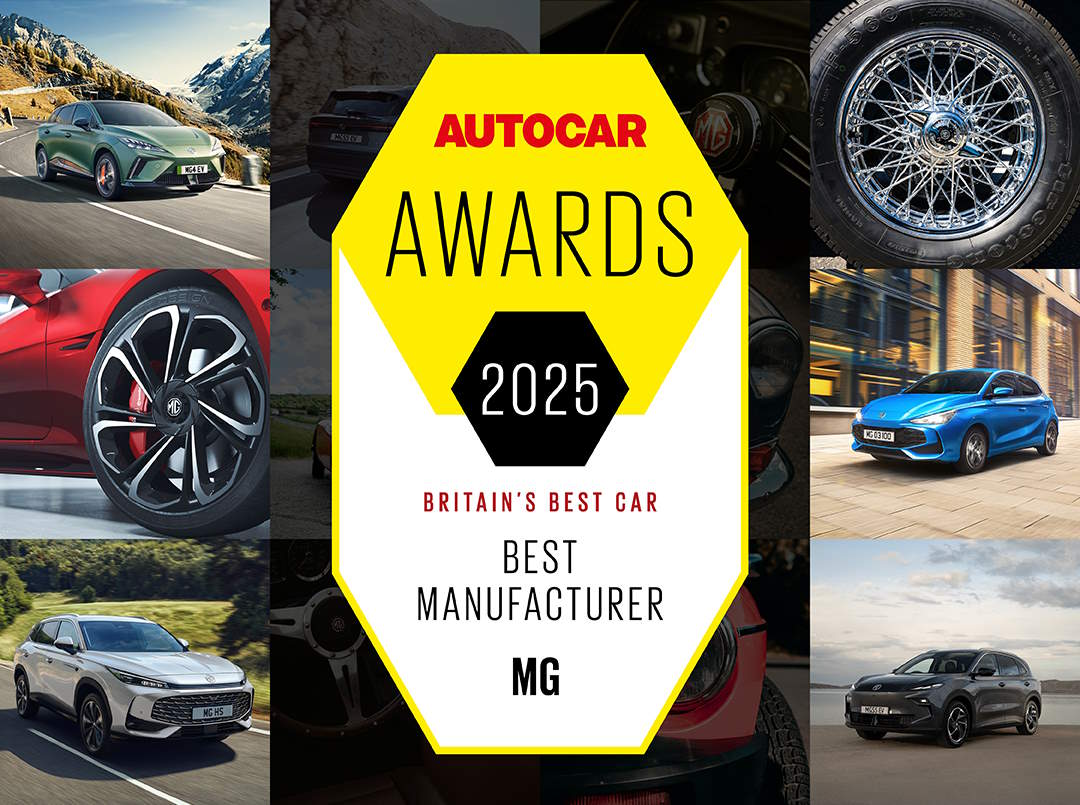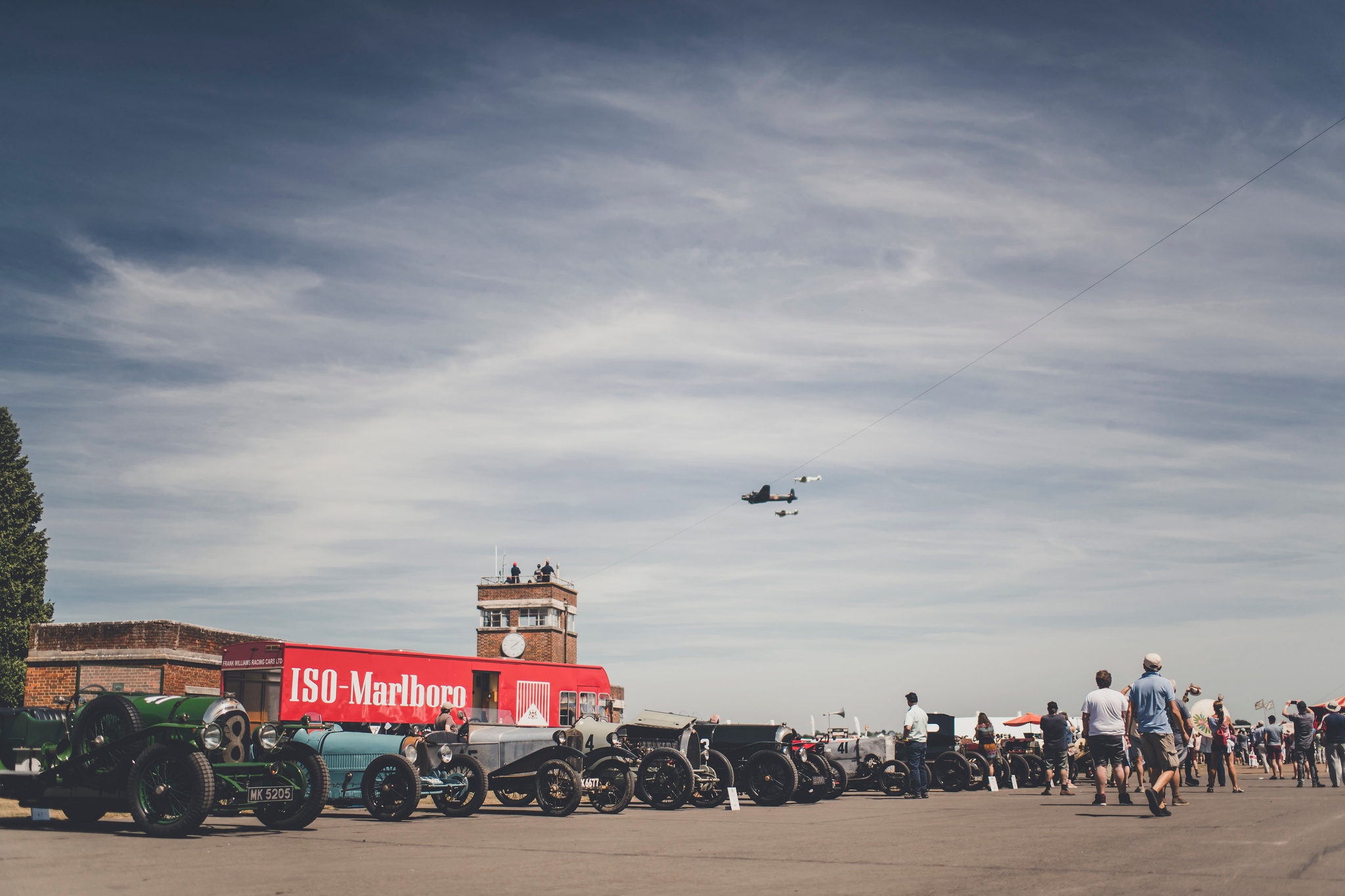Reproduction in whole or in part of any article published on this website is prohibited without written permission of The MG Car Club.
The Fairlady
Words and photos by Colin Grant and Andy Knott.
The Datsun Sports car of the 1960s strikes more than a passing resemblance to the MG favourite the MGB of the same era. Although never imported in to Britain we were lucky enough to sample the delights of a Datsun Fairlady and pitch it against the MGB.
The History…
Datsun first started building cars in 1914 and were known as D.A.T. being the initials of the three founder members of the company. Interestingly the name Datson, (note the spelling, in Japanese means son of DAT) was first used as a model name for one of their cars in 1931. In 1934 the DAT Motor Car Company and Jitsuyo Automobile Co merged and created Nissan. But instead of using the name Nissan they chose to brand their cars Datsun. During the War car production ceased as the factories were instructed to build trucks and military vehicles. After the War the company struggled to establish themselves, but were helped by the Americans and among others, Austin, who granted them a licence to produce the A50 saloons. This helped pave the way forward for them to build their own cars again, and in August 1959 they launched the Datsun P310 Bluebird.
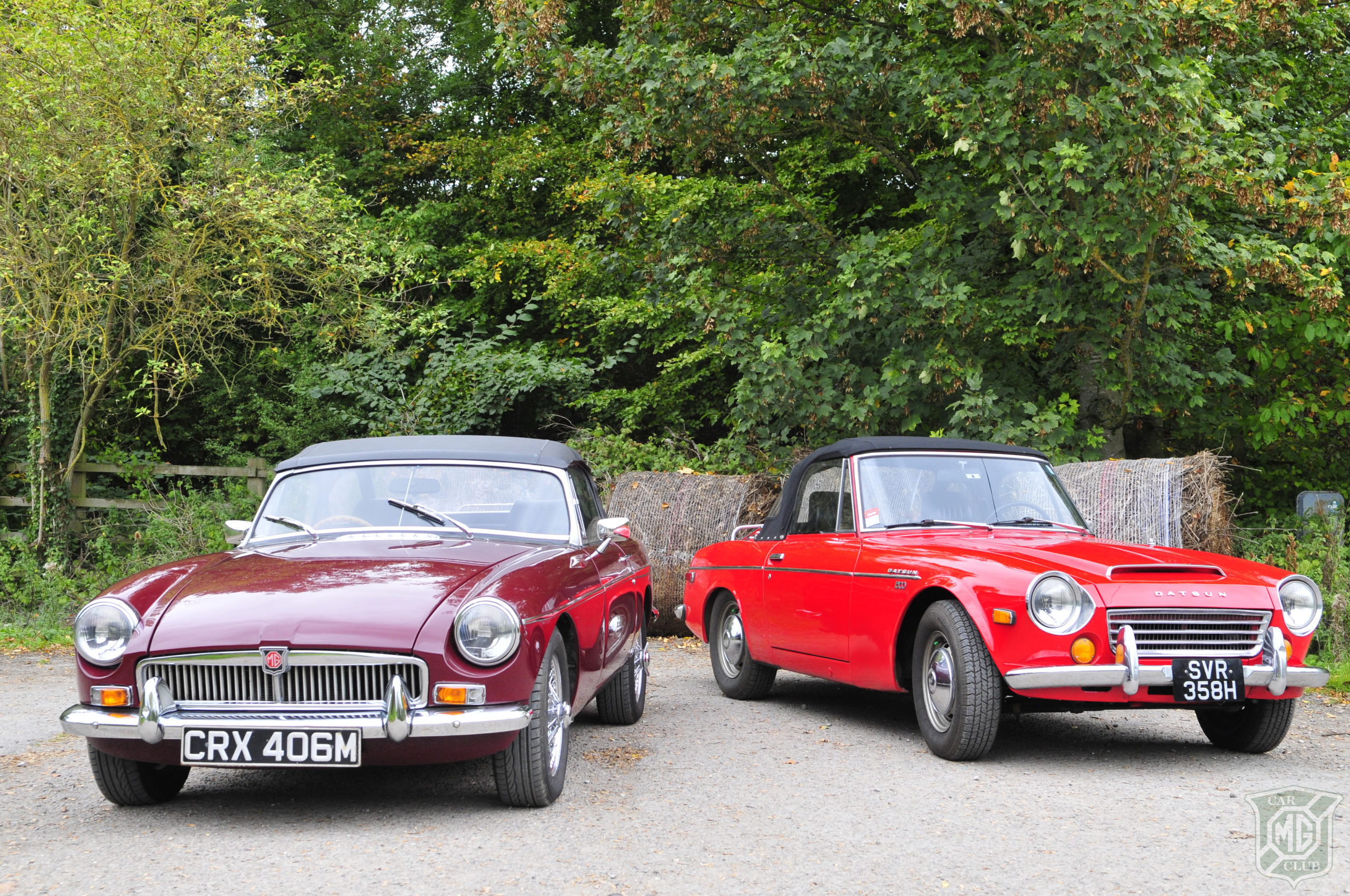
The P310 Bluebird was not very exciting, having a rather flabby appearance with an underpowered 1189cc engine. In 1959 Datsun launched their first sports car, titled the S211 which sadly didn’t catch the imagination of the eager public and only 20 examples of the S211 were built, making it the rarest of all Datsun models produced. This was mainly due to unusual styling and the use of glass fibre for its body panels.
In 1960 the SPL212 was introduced. This was the first Datsun sports car imported to the US. The letter L in its product name stands for “left hand drive”. Now with steel bodywork, it was built in slightly higher volumes than the S211, with 288 produced through to the end 1961. The SPL212 was the first car to be named Fairlady. The name was thought up by the President of Nissan, who was visiting the USA at the time and saw the Broadway musical My Fair Lady. He thought the name Fairlady suited the car, this was only used on cars sold on the home and Australian markets. Later in 1961 a slightly improved twin carburettor version of the car was produced, called the SPL213. These were sold only on the export market.
Datsun’s first true sports car was launched in1963 with the introduction of the SP310 Datsun Fairlady 1500, known as the Datsun Sports 1500 in America, which was similar in looks to our 1600 test car. The cars steel body sat on a box sectioned chassis and looked streets ahead of its forerunner, with improved styling, engine performance, handling, and unusually a cross facing rear seat. In fact it was light years better in every way. The Fairlady 1600 was launched in 1964/65 with an engine capacity of 1596cc. It had an all-synchro gearbox, front disc brakes, fold down top, padded shelf at the rear in place of the cross facing seat, and minor styling changes. It was then joined in March 1967 by a 2-litre overhead camshaft engine version with a five speed gearbox. The 2-litre version outperformed the B and went down well in America with its improved performance and cruising speeds. Production on both models ran until 1970 when the 240Z was launched.
As a comparison the MG Car company had been making cars in Oxfordshire since the early 1920s and were renowned for their affordable sports cars. In 1962 the MGB Roadster was launched to almost universal acclaim, although at the time no one realised how successful this sports car built in the then Berkshire town of Abingdon would be, with over 500,000 built over an 18 year run. The MGB was the first MG to use a monocoque chassis with its predecessor the MGA having a separate chassis to the body; it also took a different styling que from the MGA with the A’s stunning curvy lines being replaced by the equally handsome assembly of straight lines and angles. The power plant used in the MGB was the tried and tested B series engine, originally designed in the 1940s and used through the BMC/BL range in various models and cubic capacities, the MGB was to be the most powerful with the B series bore being increased, to 80.26mm, giving a capacity of 1798cc, this engine size being used initially only on the next generation of sports cars, the MGB.
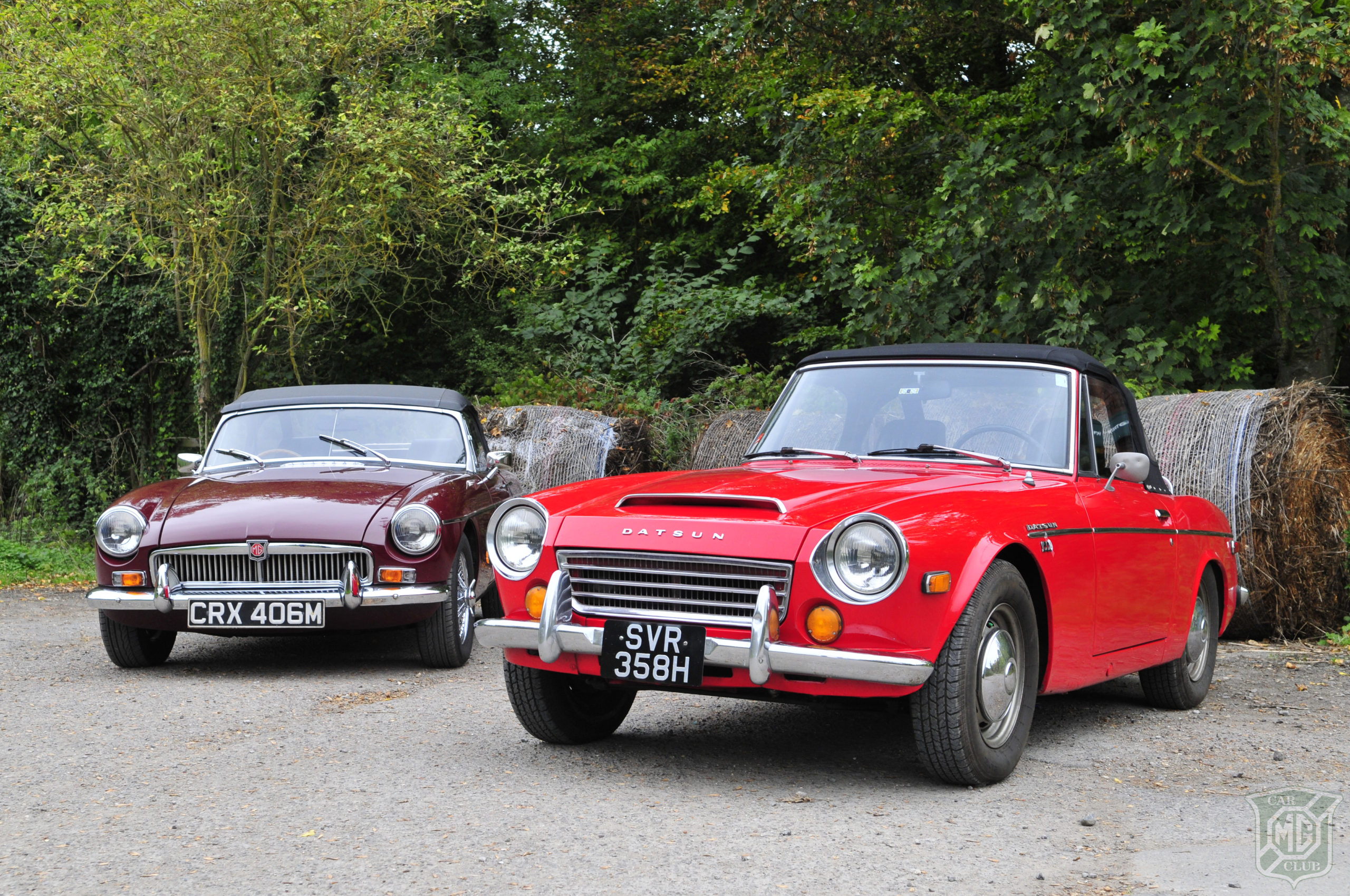
Various other detail modifications were introduced at the same time, and just two years later a completely revised block and five-bearing crankshaft were introduced for the same car which made the engine much more robust. Another major development occurred in the 1967 when the MGB was given a facelift and a new gearbox was introduced at the same time introducing synchromesh on first gear, there was also the option of having an automatic transmission from 1967. By 1970 The British Motor Corporation had merged with Leyland, the MGB had been altered due to the merger and now sported plastic seats instead of leather, Rostyle wheels and a recessed grille, which wasn’t to everyone’s taste! Even with these alterations sales of the MGB were never higher than they were in the early 70s. By 1974 the MGB had undertaken a radical change to meet the ever tightening American safety standards, and large black impact bumpers had been fitted. The rubber bumper MGB, and rubber bumper Midget were to be the last two models of MGs to come out of the Abingdon factory before its untimely closure in 1980.
Various other detail modifications were introduced at the same time, and just two years later a completely revised block and five-bearing crankshaft were introduced for the same car which made the engine much more robust. Another major development occurred in the 1967 when the MGB was given a facelift and a new gearbox was introduced at the same time introducing synchromesh on first gear, there was also the option of having an automatic transmission from 1967. By 1970 The British Motor Corporation had merged with Leyland, the MGB had been altered due to the merger and now sported plastic seats instead of leather, Rostyle wheels and a recessed grille, which wasn’t to everyone’s taste! Even with these alterations sales of the MGB were never higher than they were in the early 70s. By 1974 the MGB had undertaken a radical change to meet the ever tightening American safety standards, and large black impact bumpers had been fitted. The rubber bumper MGB, and rubber bumper Midget were to be the last two models of MGs to come out of the Abingdon factory before its untimely closure in 1980.
The Cars….
We are fortunate in having one of our members who had shipped an American market model back from Canada. This is owned by John Fry, a stalwart of the Midland Centre, and owner of numerous MG’s. He bought it as it was something different and appealed to him. It’s a 1970 1600cc model in Cherry Red and is in a very original unrestored condition. The MGB is kindly loaned by Nigel Guild of MG Specialist, Former Glory, and is a 1973 Heritage bodyshell restored car.
Putting the two cars side by side you can really appreciate the lines of the B which all flow together pleasing the eye from any angle that you care to look at it. This is in stark contrast to the Fairlady with its combination of curves and straight lines, not helped by the boxiness of the bonnet, boot and grille. The rear end styling looks a little like it has been cut off with a guillotine with an array of lights which look like they have come straight off a 1950s Buick. Suspension is identical with both cars having front coil and wishbone, with anti-roll bar, the rear being semi-elliptics, with live axle. Now strange as it may seem the quirky design of the Datsun did appeal, the more you look at it the more you appreciate it. Looking under the bonnet it has a distinct feeling of Britishness about it due to the standard alloy rocker cover and the Hitachi, made under licence, copies of SU twin carburettors.
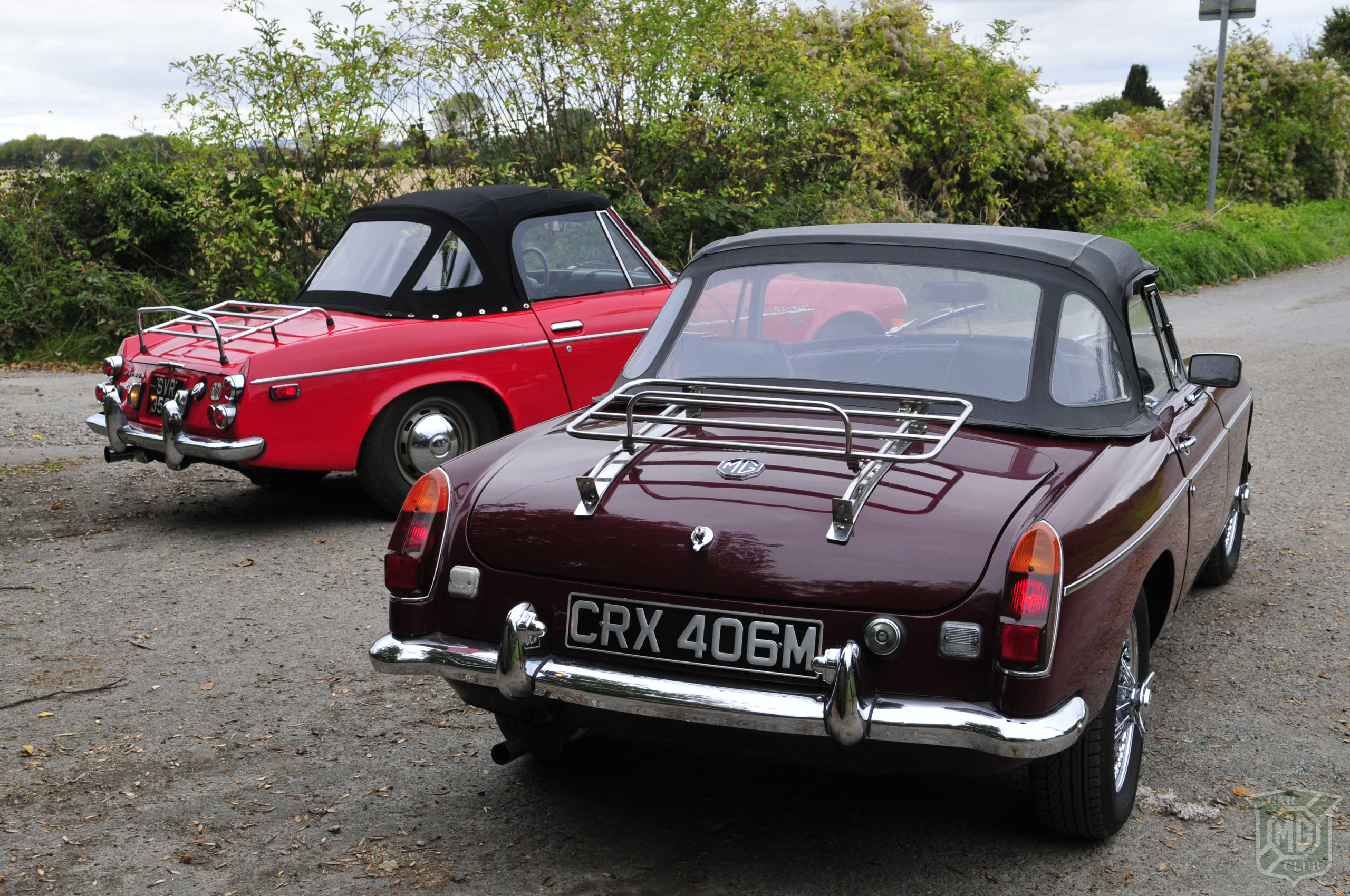
Colin’s thoughts…
Once in the cabin you notice that the car is narrower than the MGB and to combat this the door panels are made concave to offer more room and the pull handles are at the bottom of the door. The seats are well padded and give you plenty of support. The padded steering wheel is well positioned and the headroom is much better than the B due to the tall windscreen. Looking down in the footwell there is a foot rest to the left of the pedals, the cars optional radio is in a vertical position, and the instruments and dash, reminiscent of an American market MGB, include what you would expect in a sports car, a rev counter, speedo and the auxiliary gauges. The gear-lever falls readily to hand, although feels very sloppy due possibly to a worn bush in the linkage. The car starts immediately with a twist of the key and burbles into life.
Although I find it strange driving a left hand drive car I soon get the hang of it and make quick progress along the Oxfordshire roads. The steering, being a cam and lever arrangement, seems vague compared to the MGB’s rack and pinion steering. The engine pulls energetically with a very Alfa Romeo like sounding induction noise, which is quite intoxicating. The performance of the two cars is similar with around 104mph top speed and both have the same 0-60mph times of 12secs. The Datsun’s brakes don’t give the same feel as the MGB although they both have discs at the front and drums rear. The handling of the Fairlady does not seem as precise as the B, but after driving for half an hour I got the hang of it and found I could put the car into a bend with confidence.
A detailed look round the cars finds them very similar, with boot sizes about the same, both having their spare wheels taking up luggage space. The bonnet on the Datsun lifts forward allowing easy access to all the necessary items. I have to say the Datsun is well finished and has standard items that would be accessories on the B. They include twin reversing lamps, a driver’s door mirror, plus a centre console over the transmission tunnel with a lockable map box that acts as an arm rest.
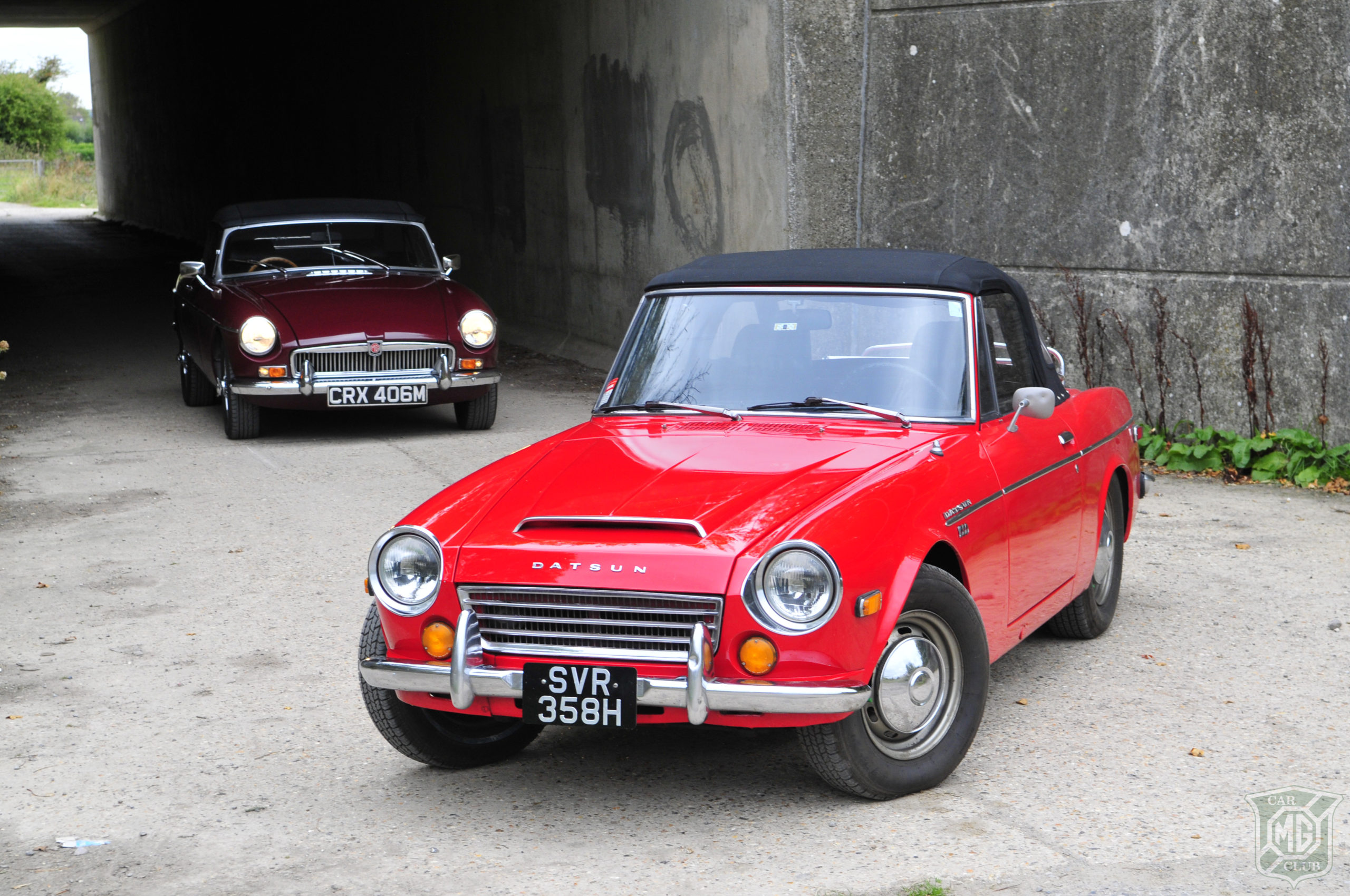
To my surprise the Datsun Fairlady held up well when compared to the B. The B of course scored better on most aspects when comparing handling, comfort, looks, but there is something about the Fairlady that appeals. It has a laid back feel about it which is addictive. The Fairlady was never a major competitor for the B. Sales figures alone show this with 40,000 Datsun’s built compered to over half a million MGB’s. But we have to remember that the Fairlady was the forerunner of the Datsun 240Z and that was another story.
Andy’s thoughts…
Out on the leafy Oxfordshire roads the Fairlady got a lot of quizzical looks, I had never seen one in the metal before now, but then they are a rarity in the UK. As I buzzed along the Oxfordshire lanes the induction noise of the frisky 94bhp 1600 engine was infectious, and made you want for more, putting your foot down whenever it was safe to do so and using the slick four speed box to its full advantage. Like most Japanese cars I’ve driven over the years I found the gearbox excellent, with the change being slick and precise, although there was a bit of movement which I’m sure could be rectified with new bushes. Cornering was good, but I felt not as taught as the MGB which was probably down to the Datsun having a separate chassis as opposed to the monocoque of the MGB, and the Datsun’s tyres, which looked oversized on the steel wheels. The steering would also have an effect on the handling, being a cam and lever arrangement as opposed to the more traditional rack and pinion fitted to the MGB.
As I slid myself in to the driver’s seat of the Datsun, the first noticeable thing was how cosy the driver’s compartment felt, there was a real art to folding my six-foot frame in to the seat and get-ting my knees under the steering wheel and into a comfortable position. Once seated the front cabin was noticeably narrower than the MGB, but very modern for a car designed in the 1960s with the plastic dials and switches reminiscent of the hot hatches that dominated the 1980s. A turn of the key and the perky 1600cc engine burst into life with a satisfying burble. Pushing the clutch down and slipping it in to first the four-speed gearbox felt very slick, I did find the accelerator and brake pedals close together and as the revs rose to pull away I had to be careful not to catch the brake with my right foot.
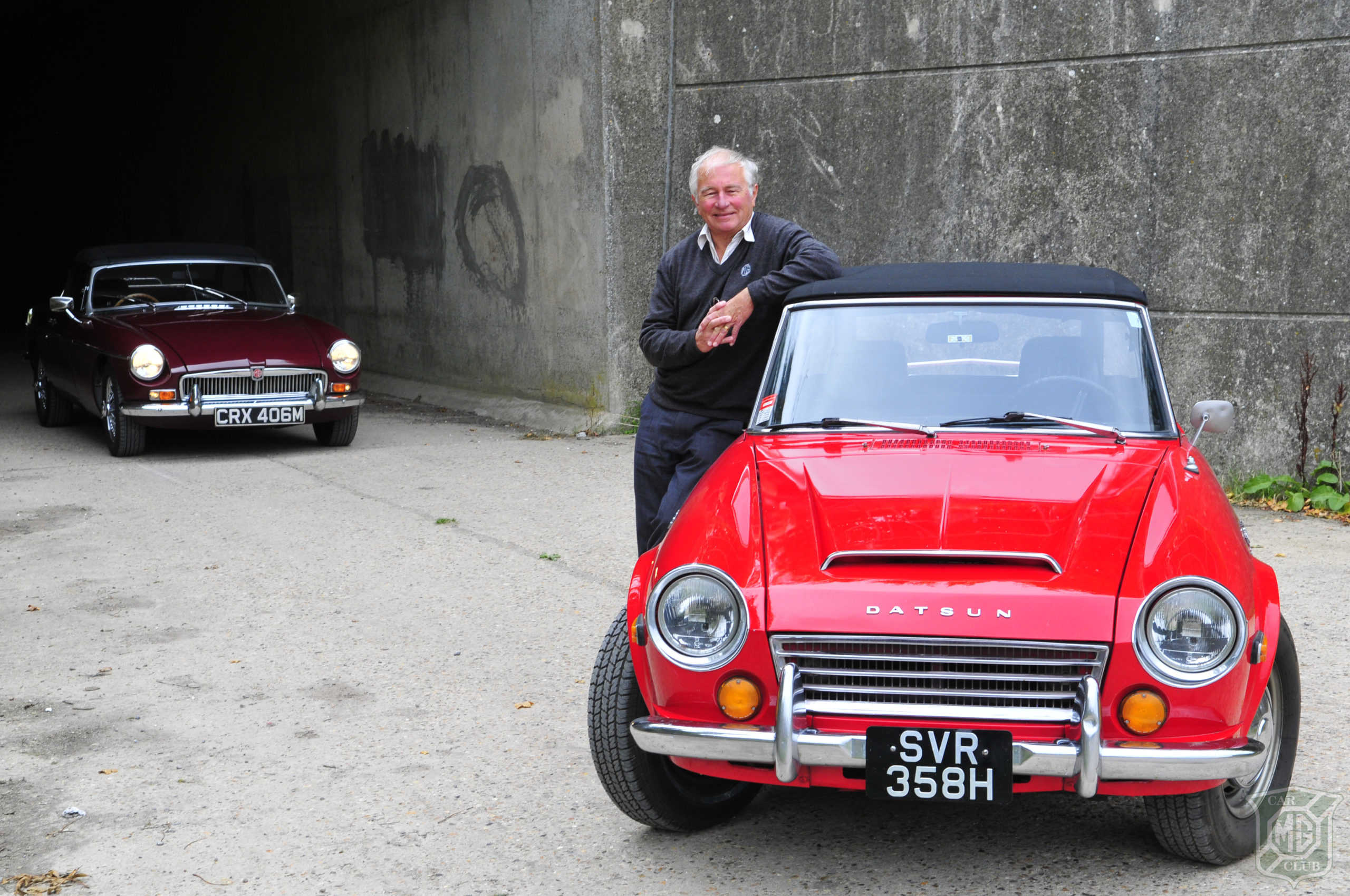
Having driven numerous MGBs over the years, a very relaxing and enjoyable 60s sportscar to drive, I found the Datsun a bit more demanding but just as fun to drive with the switches and con-trols falling to hand easily. As we pushed on having only the four-speed box I did miss the over-drive that’s fitted to the MGB, and I felt the brakes weren’t as sharp as the Bs even though they both had similar the similar arrangement. The quirky exterior styling of the Fairlady really ap-pealed to me, with the round rear lights almost an afterthought by the designers and the mixture of angular curves and straight lines used on all conceivable panels, as apposed to the uncluttered timeless design of the MGB. I thoroughly enjoyed my time behind the wheel of the Fairlady, it was a fun quirky 60s sportscar, but my heart lies with the MGB, I just felt more comfortable and at home in the MG.
Nigel Guild, owner of MG Specialist, Former Glory, was asked to give his views on the Datsun.
‘It immediately struck me how similar it is to the MGB, although once behind the wheel the differences become apparent. The steering and handling are not on par with the B, although not that far behind. The car I feel is so laid back and has such a lazy feel about it that it would be more at home cruising along an American Boulevard than the B roads of Oxfordshire. I was only going to take it round the block but once underway I felt I had to go farther and I really enjoyed the experience. To be honest I would love to own one and I never thought I would hear myself saying that about a car that’s not an MG!!”

 MG Car Club
MG Car Club